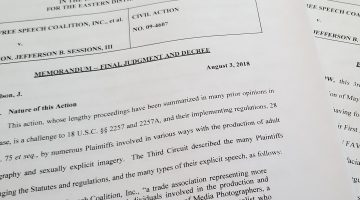 BOSTON – In an attempt to proactively address the fact that an increasing number of high school students in the city are engaging in sexual activity, the Boston Public Health Commission (BPHC) has created a Facebook page to educate teens about the dangers of sexually transmitted diseases and the steps they can take to prevent exposure to them.
BOSTON – In an attempt to proactively address the fact that an increasing number of high school students in the city are engaging in sexual activity, the Boston Public Health Commission (BPHC) has created a Facebook page to educate teens about the dangers of sexually transmitted diseases and the steps they can take to prevent exposure to them.
According to thebostonchannel.com, “The campaign mixes street outreach, the Internet, and traditional media and targets sexually active teens between the ages 15 and 19, who represent the highest percentage of new cases of Chlamydia and gonorrhea in Boston.”
With nearly one in four young people admitting to having multiple sexual partners, the BPHC and other public officials thought the time was right, if not long overdue, to address the issues head on, using methods and tools designed to have an impact.
“This campaign breaks new ground for the city of Boston in our efforts to reach young people wherever they are — be it on Facebook or watching BET,” Mayor Thomas M. Menino said. “We know that with awareness comes changes in behavior, and that’s what we are trying to achieve.”
The Facebook page provides a chronicle of campaign activities, including the posting of YouTube videos with safety themes produced by students. This spring, Menino and the BPHC sponsored a student video contest on YouTube called Get Reel: Check Yourself.
“STIs are entirely preventable, and yet too many of our youths in Boston and across the country are getting infected,” Dr. Barbara Ferrer, executive director of the BPHC, said. “It is critically important that we create an environment where young people can start to have a conversation about the fact that this behavior is not OK.”
In 2008, the incidence rate for chlamydia among 15- to 19-year-old females was 4,726 per 100,000, compared to 673 per 100,000 for women of other ages. In males ages 15-19, the incidence rate was 1,608 per 100,000.
According the 2009 Health of Boston report, 56 percent of Boston Public High School students have had sex, including 40 percent of those younger than 16; 24 percent of sexually active BPS students had more than six partners. Only 71 percent of sexually active students had used a condom during their last sexual contact.












No Comment